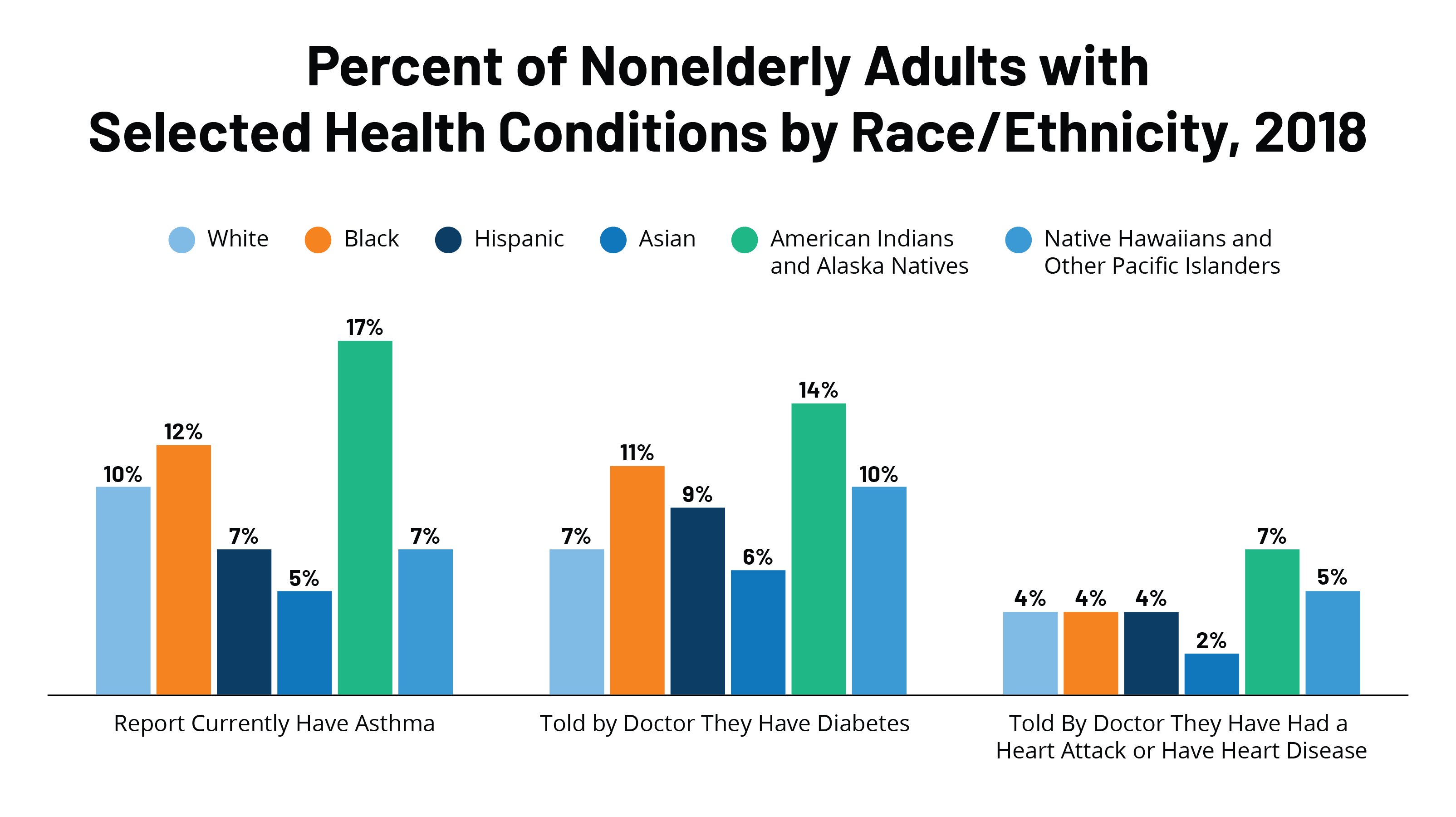By Samantha Artiga, Rachel Garfield, and Kendal Orgera—April 7, 2020
The COVID-19 outbreak presents potential health and financial challenges for families, which may disproportionately affect communities of color and compound underlying health and economic disparities. This brief analyzes data on underlying health conditions, health coverage and health care access, and social and economic factors by race and ethnicity to provide insight into how the health and financial impacts of COVID-19 may vary across racial/ethnic groups. It finds:
- Communities of color are at increased risk for experiencing serious illness if they become infected with coronavirus due to higher rates of certain underlying health conditions compared to Whites;
- Communities of color will likely face increased challenges accessing COVID-19-related testing and treatment since they are more likely to be uninsured and to face barriers to accessing care than Whites; and
- Communities of color face increased financial and health risks associated with COVID-19 due to economic and social circumstances.
Early data suggest COVID-19 is disproportionately affecting groups of color. For example, in the District of Columbia, Blacks make up 45% of the total population, but accounted for 29% of confirmed coronavirus cases and 59% of deaths as of April 6, 2020. In Louisiana, Blacks make up 32% of the total state population, but accounted for over 70% of COVID-19 deaths as of April 6, 2020. Data from Illinois show that groups of color accounted for 48% of confirmed cases and 56% of deaths as of April 6, 2020, while only making up 39% of the total state population. In North Carolina, Blacks make up 21% total state population, but accounted for 37% confirmed cases as of April 6, 2020. In Michigan, where Blacks make up 14% of the total state population, they accounted for 33% of confirmed cases and 41% of deaths as of April 6, 2020. Moreover, survey data find that Latinos are more likely than Americans overall to see COVID-19 as a major threat to health and finances.
Comprehensive data by race and ethnicity will be key for understanding the impacts of COVID-19 across communities and on health and economic disparities going forward. Data by race and ethnicity will also be important for understanding the extent to which there are disparities in access to and receipt of health and economic relief. Together these data can help shape and target response and relief efforts. Although some states and localities are reporting data by race and ethnicity, as of early April, CDC was not reporting data by race and ethnicity and these data were not available widely across states. CDC requests racial and ethnic data on its case reporting form for coronavirus, but had not indicated plans to expand reporting of these data as of early April.
Read more at the Kaiser Family Foundation.




